Indigenous millet producer in Nishi-Awa
In the western part of the Tokushima Prefecture, finger millet, Japanese millet, foxtail millet, common millet, sorghum, and buckwheat have been cultivated for tobacco after crop and slash-and-burn farming.
Sorghum and finger millet are native to Africa, foxtail millet and common millet are native to India, and Japanese millet is native to East Asia. Cultivation of these millets in this area was almost completely abandoned by the 1970s. However, the culture of eating millet still remains, such as always eating millet rice cakes at New Year's celebrations.
These millet seeds do not germinate very well after a few years. In order to protect the varieties of indigenous millets, it is always necessary to replant them. If you look carefully at the fields in this area, you will sometimes find millets growing along roadsides or on buckwheat farms. These are called “Hitori-Bae”. This is a traditional practice, whereby the millet plants that grow from the seeds that spill from the ripe ears are left behind for the next year's seed collection.
Furthermore, the farmers have been collecting and preserving seeds of the original species of millets. For example, Iya Grains Production Association has been established in 2016 to pass down such precious genetic resources.
Voices of the producers and their products
The story of these millets registration
Nishi-Awa GIAHS Network
Nishi-Awa GIAHS network has been organized by Prof. Naoki Naito and students at Tokushima University, Slow food Nippon, local municipality in charge of Nishi-Awa GIAHS conservation, teachers and students at Ikeda high school, Iya millet production association and six indigenous millets to reconnect almost forgotten relationships between human and millets.
Trough the assistance of Toyota foundation, members of the Nishi-Awa GIAHS network researched the current situation of millet production and cropped the for commodity production from 2020.
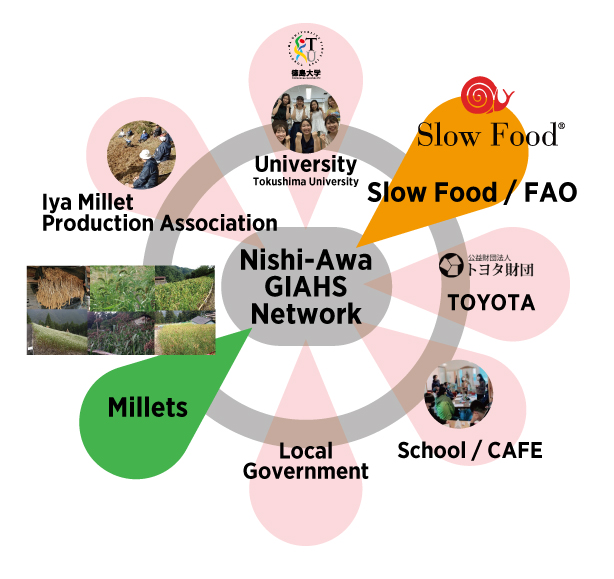
Six indigenous millets in Iya registered as the Ark of Taste
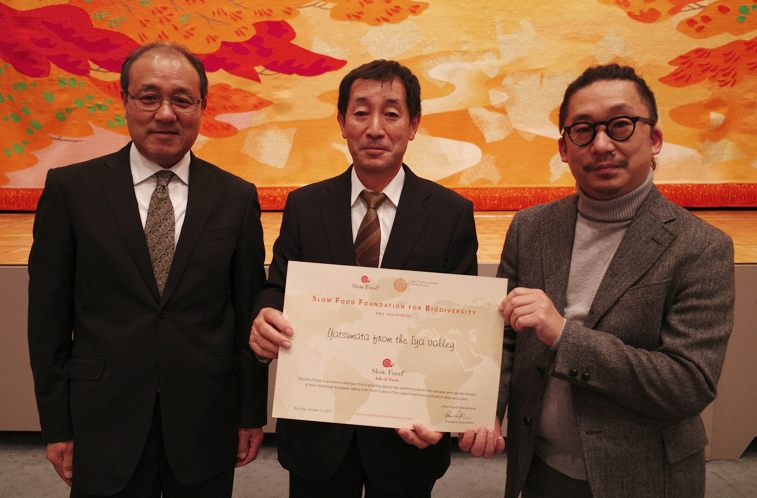
The Ark of Taste by Slow Food is an online catalog to gather caution the native products disappearing.
Prof. Naoki Naito of Tokushima University, Graduate School of Technology, Industrial and Social Science, promoted the registration of six indigenous millets, i.e., finger millet, Japanese millet, foxtail millet, common millet, sorghum, and buckwheat grown in Higashi-Iya.
He has been conducting the conservation of the Nishi-Awa GIAHS site and the indigenous millets of Higashi-Iya. He has collaborated with global and local actors such as Slow Food Nippon, Higashi-Iya Millet Producer Association in Miyoshi city, Ikeda High School, and related public administration to conserve indigenous millets. In 2020–2021, he conducted a project to promote our indigenous millets in collaboration with various sectors founded by the TOYOTA foundation.
The Ark of Taste Products
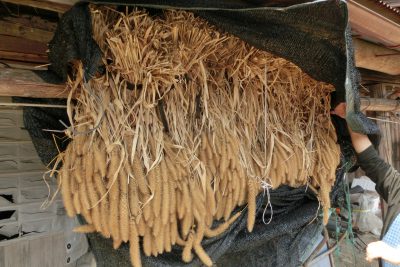
Iya Valley Awa
Foxtail millet (Setaria italica) is a cereal that belongs to the Poaceae family, its small, light brown fruits develop in clusters.
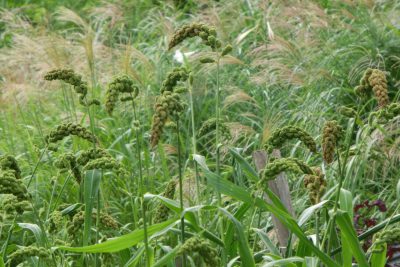
Iya Valley Hie
Iya Valley Hie (Echinochloa utilis) comes from the word “hie” which means cold. It is in fact an extremely resistant plant to harsh climates.

Iya Valley Kokibi
Kokibi or kibi is a variety of millet (Panicum miliaceum) that is grown in the Iya Valley, in the Tukushima Prefecture. Its name comes from the yellow colour of the grain and the fact that it is shorter (“ko”) than takakibi (Sorghum bicolor).
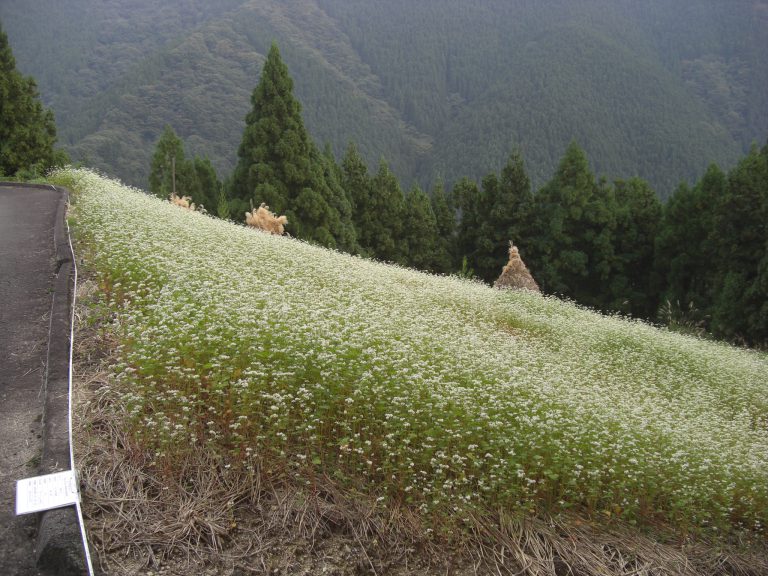
Iya Valley Soba noodles
Both the traditional tagliolini or spaghetti that are made using buckwheat flour and the actual buckwheat (Fagopyrum esculentum) itself and are known as soba in Japan.
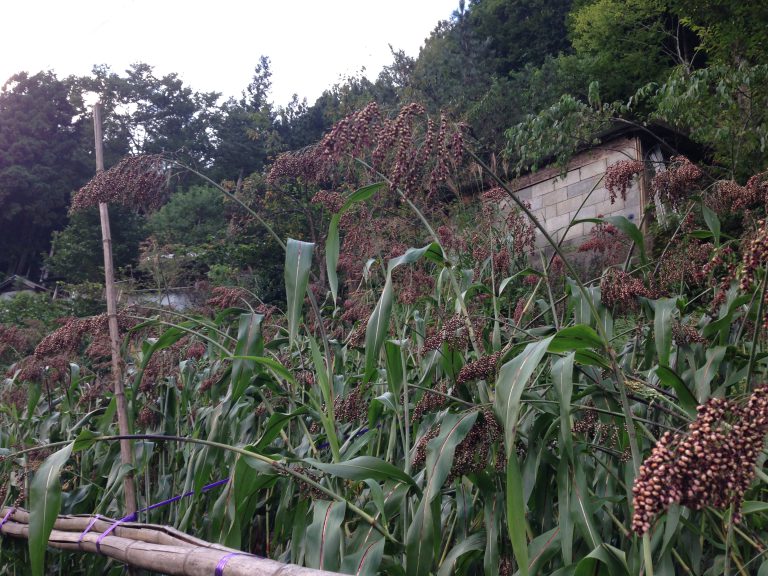
Iya Valley Takakibi
Takakibi – known also as morokoshi – is a local variety of sorghum (Sorghum bicolor) from the Iya valley. Sorghum is an annual herbaceous plant which belongs to the Graminaceae family. The term “taka” means “tall”, due to the fact that the plant is characteristically rather tall.

Iya Valley Yatsumata
The Iya Valley Yatsumata, which is also known as Shikoku bie, belongs to the Poaceae family. It is a species of millet (Eleusine coracana) that is also grown in the arid and semi-arid areas of Africa and Asia.
Related informations
- Terra Madre Salone del Gusto 2022: Exhibition
Date: September 22-26, 2022 11:30~12:30
Venue: Parco Dora Torino, Turin, Italy
Detail >> https://2022.terramadresalonedelgusto.com/en/ - Terra Madre Salone del Gusto 2022: Workshop
Date: September 25, 2022 11:30~12:30
Venue: Parco Dora Torino, Turin, Italy
Speaker: Naoki Naito (Tokushima University)
(TBD) "Network Workshop on Advocacy"
Detail >> https://2022.terramadresalonedelgusto.com/en/event/asia-pacific-network-workshop-on-advocacy/ - Millet summit in Nishi-Awa
Date: August 29–30, 2022
Venue: Higashi-Iya Museum of Local History and Folklore, Miyoshi, Japan
Detail >> https://giahs-tokushima.jp/en/info/millet-summit-in-nishi-awa - The 6th ERAHS
Date: May 2019
Venue: Hadong, Korea
Speaker: Naoki Naito (Tokushima University) , Maho Kitano (Tokushima University)
Title: GIAHS Conservation and Material Culture in Tokushima, Japan: Conserving Indigenous Farming Implement as an agent of human-environment system - The 5th ERAHS (August 26-29, 2018)
Date: August 27th, 2018
Speaker: Naoki Naito (Tokushima University)
Title: Nishiawa GIAHS and various conservation (PDF)
Detail >> https://www.giahs-minabetanabe.jp/en/ - The 30th Annual Conference of the JANES: Public Symposium "Connect Africa and Japan with Globally Important Agricultural Heritage Systems"
Date: 14:00-16:45 April 17th, 2021
Venue: ZOOM (in Japanese)
Detail >> https://naito-anthro-lab.org/janes30th
>> The unique cultivation practices of steep slope areas in Eastern Tokushima - Symposium "The possibilities of indigenous millets"
Date: July 15th, 2016
Venue: Tokushima
Detail >> https://giahs-tokushima.jp/symposium/sympo20160715-2 (in Japanese) - Symposium "Future of indigenous agriculture"
Date: 14:00〜 September 13th, 2015
Venue: Tokushima
Detail >> https://giahs-tokushima.jp/symposium/sympo20150913 (in Japanese)
Related Movie
![]() Infomation system and Adaptive tecnology
Infomation system and Adaptive tecnology
English subbed
![]() Biodiversity and Ecosystem function
Biodiversity and Ecosystem function
English subbed
